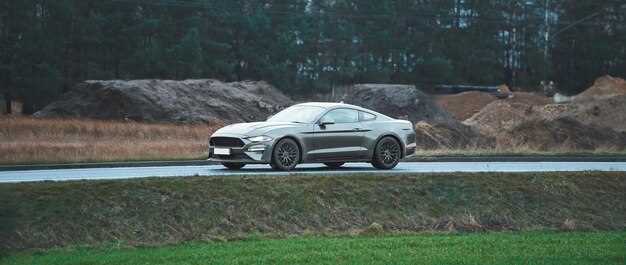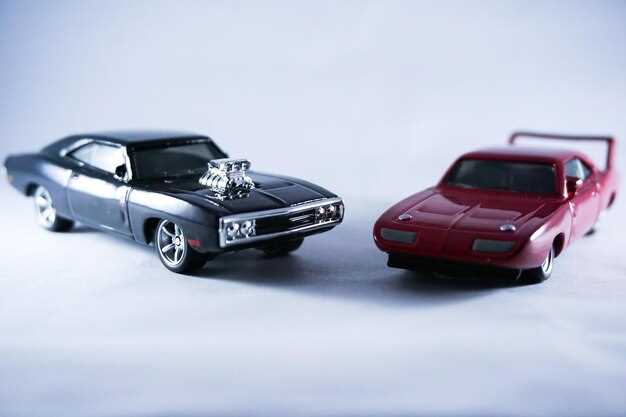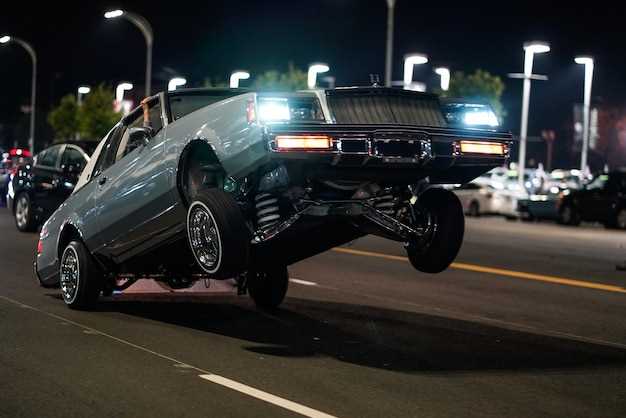

The evolution of the iconic Mustang brand has introduced a significant shift in the automotive landscape, particularly with the arrival of the Mustang Mach-E. This all-electric SUV represents a departure from the classic muscle car heritage of the traditional Mustang, offering a unique perspective on performance and sustainability. As electric vehicles gain traction in the market, it becomes essential to explore how the Mach-E compares to its gasoline-powered predecessor.
In this article, we will delve into various aspects of both vehicles, examining their performance metrics, design philosophies, and technological innovations. The traditional Mustang is celebrated for its roaring engine and exhilarating driving experience, while the Mach-E aims to redefine this experience by integrating advanced electric technologies and a focus on eco-friendliness. By comparing these two distinct yet related models, we can better understand the future of the Mustang lineage.
While the heart and soul of the Mustang brand remain evident in both models, the transition to electric mobility introduces new challenges and opportunities. From acceleration and handling to interior features and driver assistance systems, the Mustang Mach-E offers a fresh take on what it means to be a Mustang owner. As we explore these differences, we invite enthusiasts and newcomers alike to consider what these vehicles represent in the context of modern automotive engineering.
Performance Metrics: Acceleration and Handling

The Ford Mustang Mach-E and the traditional Mustang represent two distinct approaches to performance, each tailored to its powertrain. The electric Mach-E boasts impressive acceleration figures, particularly in its GT variant, which can reach 0 to 60 mph in around 3.5 seconds. This rapid acceleration is largely due to the instant torque delivery characteristic of electric motors, providing a thrilling driving experience.
In contrast, the traditional Mustang, powered by its iconic V8 engine, still offers outstanding performance. The latest models can accelerate from 0 to 60 mph in approximately 4 seconds, delivering a growling exhaust note that enthusiasts cherish. The internal combustion engine provides a different kind of excitement, appealing to drivers who appreciate the mechanical engagement of shifting gears.
Handling is another critical aspect of performance metrics. The Mustang Mach-E benefits from a low center of gravity and a well-distributed weight that enhances cornering capabilities. Its all-wheel-drive system further improves traction and stability, making it a nimble performer in various driving conditions. The Mach-E’s enhanced handling dynamics can surprise traditional Mustang drivers, offering a level of agility typically associated with sports cars.
On the other hand, the traditional Mustang has a strong legacy of handling prowess, especially in its track-focused models. Equipped with advanced suspension systems and a rear-wheel-drive setup, it delivers responsive steering and a connected feel to the road. The combination of power and precision in the traditional Mustang remains unmatched for many driving purists.
Ultimately, both the Mach-E and traditional Mustang cater to different tastes in acceleration and handling. While the Mach-E utilizes electric performance for rapid bursts and precise cornering, the traditional Mustang celebrates raw power and visceral engagement, making each vehicle a worthy contender in the realm of performance metrics.
Cost of Ownership: Maintenance and Charging vs. Fueling
The ownership costs of the Electric Mustang Mach-E significantly differ from those of the traditional gasoline Mustang. One of the most notable differences lies in maintenance. Electric vehicles (EVs) like the Mach-E require less maintenance because they have fewer moving parts compared to internal combustion engines. The absence of oil changes, fuel filters, spark plugs, and exhaust systems reduces overall maintenance expenses.
The electric powertrain in the Mustang Mach-E typically leads to lower maintenance costs in the long run. Brake wear is also minimized due to regenerative braking, leading to longer-lasting brake components. In contrast, the traditional Mustang relies on a gas engine, which inherently requires more frequent maintenance and servicing, often resulting in higher costs over time due to the complexities involved in the engine and fuel systems.
Charging the Mach-E presents another area of financial consideration. Home charging can be more cost-effective than gasoline, especially with the availability of time-of-use electricity rates and potential incentives for installing charging stations. Depending on local electricity prices, the cost per mile in an electric Mustang can be significantly lower than that of a gas-powered Mustang.
However, charging infrastructure can impact convenience and costs. Public charging stations might charge higher rates compared to home electricity, particularly fast chargers. For traditional Mustang owners, fueling up is straightforward and widely available at countless gas stations, making it an easier choice for long-distance travel.
Overall, while the Electric Mustang Mach-E offers lower maintenance costs and potentially cheaper fueling through electricity, the convenience of refueling a gas-powered Mustang remains appealing to many. Each vehicle’s total cost of ownership depends on individual driving habits, local energy prices, and maintenance expectations, which are crucial factors in this comparison.
Technological Features: Infotainment and Driver Assistance Systems

The Ford Mustang Mach-E and the traditional gas-powered Mustang represent two different eras of automotive technology, particularly in terms of infotainment and driver assistance systems. The Mach-E, as an electric vehicle, leverages the latest digital innovations, while the gas-powered Mustang continues to charm with its classic yet modern features.
Infotainment Systems
The dashboard of the Mustang Mach-E is dominated by a large, vertically-oriented touchscreen, which provides an immersive interface for navigation, music, and vehicle settings. Below are some key features:
- Sync 4A: The Mach-E features Ford’s advanced Sync 4A system, providing over-the-air updates, enhanced voice recognition, and cloud-based navigation.
- Smartphone Integration: Seamless connectivity with Apple CarPlay and Android Auto allows drivers to easily access apps and services.
- Sound System: A premium Bang & Olufsen sound system delivers exceptional audio quality, enhancing the overall driving experience.
In contrast, the traditional Mustang offers a different experience:
- Sync 3: The gas-powered Mustang is equipped with the earlier version Sync 3, providing solid functionality but lacking some of the advanced features of Sync 4A.
- Available Upgrades: While it lacks the latest systems, it can be upgraded with aftermarket solutions for enhanced infotainment capabilities.
- Sound System Options: The traditional Mustang offers various audio systems, including optional premium sound systems, yet it is often overshadowed by the Mach-E’s audio technology.
Driver Assistance Systems
Safety and convenience technologies have become crucial in modern vehicles. The Mach-E showcases a wide array of advanced driver assistance systems:
- Ford Co-Pilot360: This suite includes features such as automatic emergency braking, lane-keeping assist, and adaptive cruise control, making driving safer and more comfortable.
- BlueCruise: Offers hands-free driving on select highways, a feature that is particularly significant for long-distance travel.
Conversely, the traditional Mustang incorporates driver assistance features but to a lesser extent:
- Basic Safety Tech: It includes features like rear-view camera and basic lane-keeping assistance, though it does not match the comprehensive suite of the Mach-E.
- Performance Focus: The gas Mustang is designed primarily for performance driving, which may limit the integration of some driver assistance technologies compared to the Mach-E.
In summary, while both the Mustang Mach-E and traditional gas-powered Mustang offer infotainment and driver assistance systems, the Mach-E stands out with its innovative technology, reflecting the shift towards a more connected, automated driving experience.






